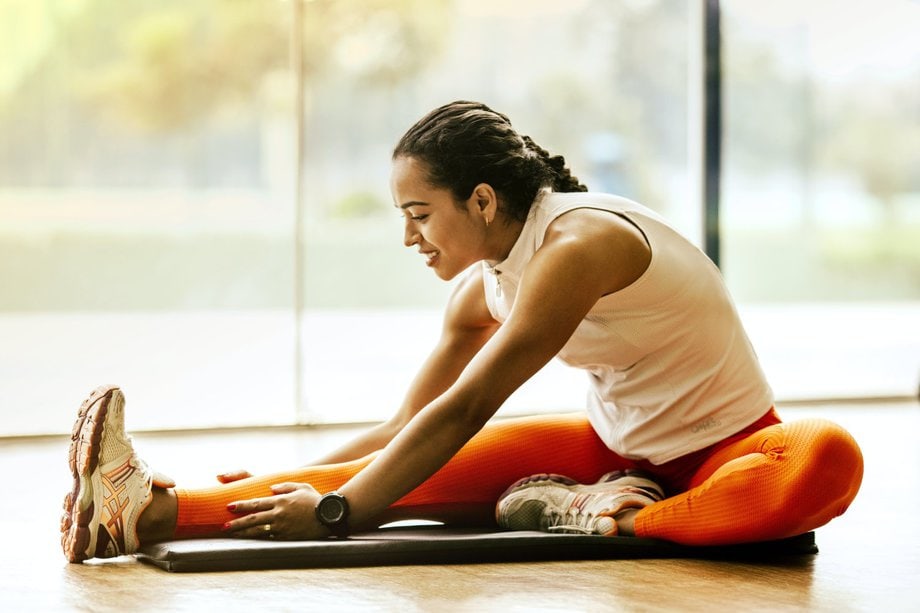What Are The Best Exercises For Lowering Blood Pressure?

High blood pressure, or hypertension, is a common health condition that affects a significant portion of the global population. It is associated with an increased risk of cardiovascular diseases, stroke, and other adverse health outcomes. While medication is often prescribed to manage high blood pressure, lifestyle modifications, such as exercise, can also play a crucial role in its prevention and control.
This article aims to explore the best exercises for lowering blood pressure. The effectiveness of different exercise modalities, including cardiovascular exercises, strength training, yoga and Pilates, high-intensity interval training (HIIT), mindfulness exercises, low-impact exercises, and group fitness classes, will be discussed.
The article will also highlight the importance of consulting with a healthcare professional before initiating any exercise regimen, as individualized recommendations may be necessary based on the person’s overall health status. By understanding the potential benefits of exercise in managing blood pressure, individuals can make informed decisions about incorporating suitable exercises into their daily routine.
Key Takeaways
- HIIT, mindfulness exercises, and low-impact exercises are effective for lowering blood pressure.
- Mindfulness exercises focus on the present moment and acceptance without judgment, leading to significant reductions in blood pressure and overall well-being.
- Low-impact exercises such as walking, swimming, cycling, yoga, and Tai Chi are joint-friendly and effective for lowering blood pressure.
- Group fitness classes provide workout options, social engagement, motivation, and accountability, promoting regular physical activity and reducing blood pressure.
Cardiovascular Exercises
Cardiovascular exercises have been widely recognized as an effective means for reducing blood pressure levels due to their ability to enhance heart function and promote vascular health.
Engaging in regular aerobic exercises, such as jogging, swimming, or cycling, can significantly improve cardiovascular endurance and subsequently lower blood pressure. These exercises involve large muscle groups, increasing heart rate and improving oxygen delivery to the body. As a result, blood vessels dilate and become more flexible, reducing resistance to blood flow and ultimately leading to reduced blood pressure.
Furthermore, aerobic exercises also aid in weight management, another crucial factor in maintaining healthy blood pressure levels.
Overall, incorporating cardiovascular exercises into one’s routine can serve as an important lifestyle modification for individuals looking to effectively lower their blood pressure.
Strength Training
Strength training is an important component of a well-rounded exercise routine and can have numerous health benefits.
Weightlifting is a form of strength training that involves using free weights or weight machines to build muscle strength and endurance.
Resistance band exercises are another effective way to engage in strength training, as they provide resistance throughout the movement and can be easily adjusted to suit different fitness levels.
Weightlifting
Weightlifting, a powerful form of resistance training, has been shown to effectively lower blood pressure levels in individuals with hypertension. Numerous studies have demonstrated the benefits of weightlifting in reducing blood pressure.
The American Heart Association recommends weightlifting as an effective strategy for managing high blood pressure. Weightlifting helps to strengthen the muscles, resulting in improved cardiovascular health. Additionally, weightlifting techniques such as compound exercises and circuit training can further enhance the blood pressure-lowering effects.
Compound exercises, which involve multiple muscle groups, are particularly beneficial for reducing blood pressure. These exercises include squats, deadlifts, and bench presses. Circuit training, which involves performing a series of exercises with minimal rest in between, can also be effective in lowering blood pressure.
It is important to note that individuals with hypertension should consult with a healthcare professional before starting a weightlifting program.
Resistance Band Exercises
Resistance band exercises, a popular form of resistance training, have been shown to be effective in improving overall muscle strength and flexibility. Resistance band workouts involve the use of elastic bands that provide resistance as they are stretched. These exercises offer several benefits for individuals looking to lower their blood pressure.
Firstly, resistance band workouts can help in reducing body weight and body fat, which are key factors in managing hypertension.
Secondly, these exercises can increase cardiovascular endurance, leading to improved heart health and lower blood pressure.
Additionally, resistance band exercises target multiple muscle groups, including the arms, shoulders, legs, and core, promoting muscle balance and overall stability.
This form of exercise can be easily modified to accommodate different fitness levels and can be performed at home or in a gym setting, making it accessible and convenient for individuals seeking to lower their blood pressure.
Yoga and Pilates
This paragraph introduces a discussion on the subtopic of Yoga and Pilates, focusing on two key points: gentle stretching and strengthening, and deep breathing techniques.
These practices involve a series of exercises that aim to improve flexibility, balance, and muscle tone through slow, controlled movements.
Additionally, they emphasize the importance of deep, rhythmic breathing to promote relaxation and reduce stress.
Gentle Stretching and Strengthening
Gentle stretching and strengthening exercises have been found to be effective in reducing blood pressure levels. These exercises focus on improving flexibility and balance, both of which are important for maintaining overall cardiovascular health.
The following sub-lists provide a visual representation of the different types of exercises that fall under gentle stretching and strengthening:
- Flexibility exercises:
- Yoga poses such as downward dog and child’s pose can help stretch and lengthen muscles, promoting relaxation and improved blood flow.
- Tai chi movements involve slow, controlled movements that enhance flexibility and promote a sense of calm.
- Pilates exercises that emphasize stretching, such as the spine stretch forward, can help improve flexibility and reduce tension in the body.
- Balance training:
- Standing on one leg while reaching for an object challenges balance and strengthens the muscles involved in maintaining stability.
- Standing heel-to-toe, also known as the tandem stance, improves balance by challenging the body’s ability to maintain a stable position.
- Balancing on a wobble board or stability ball engages core muscles and improves overall balance.
By incorporating gentle stretching and strengthening exercises into a routine, individuals can effectively lower their blood pressure levels while also improving flexibility and balance.
Deep Breathing Techniques
Moving on from the previous subtopic of gentle stretching and strengthening exercises, another effective approach for lowering blood pressure is the practice of deep breathing techniques.
Deep breathing involves taking slow, deep breaths, focusing on filling up the lungs with air and then exhaling fully. This deliberate and controlled breathing has been shown to activate the body’s relaxation response, reducing stress and promoting a sense of calm.
Deep breathing exercises can be complemented by meditation techniques, such as mindfulness meditation, which involves non-judgmentally focusing on the present moment.
Studies have demonstrated that incorporating deep breathing and meditation into a regular exercise routine can lead to significant reductions in blood pressure.
These techniques can be easily incorporated into daily life, providing individuals with a practical and accessible tool for managing their blood pressure levels.
High-Intensity Interval Training (HIIT)
High-Intensity Interval Training (HIIT) has been shown to effectively lower blood pressure through its combination of intense bursts of exercise followed by short periods of rest or lower-intensity activity. This form of exercise has gained popularity due to its time efficiency and numerous health benefits. HIIT involves performing short, intense exercises for a specific duration, followed by brief recovery periods. Research suggests that HIIT can help reduce blood pressure levels in individuals with hypertension. Additionally, HIIT has been shown to improve cardiovascular fitness, insulin sensitivity, and overall physical performance. However, it is important for beginners to start slowly and gradually increase the intensity and duration of HIIT workouts to avoid injury or overexertion. Consulting with a healthcare professional before starting any new exercise program is advised.
| HIIT Benefits | HIIT for Beginners |
|---|---|
| Improved cardiovascular fitness | Start with low-intensity exercises |
| Increased insulin sensitivity | Gradually increase intensity and duration |
| Enhanced physical performance | Consult with a healthcare professional |
| Time-efficient | Monitor for any signs of overexertion |
Mindfulness Exercises
High-Intensity Interval Training (HIIT) has been discussed as an effective exercise for lowering blood pressure. Now, let’s turn our attention to another approach: mindfulness exercises.
Mindfulness techniques, including meditation exercises, have gained recognition for their potential to reduce blood pressure levels. These exercises involve focusing one’s attention on the present moment and accepting it without judgment. By practicing mindfulness, individuals can cultivate a state of calm and relaxation, which can have a positive impact on blood pressure. Research has shown that regular mindfulness practice can lead to significant reductions in both systolic and diastolic blood pressure.
Moreover, incorporating mindfulness exercises into a daily routine can help manage stress, enhance overall well-being, and potentially contribute to better cardiovascular health. Consider the following benefits of mindfulness exercises:
- Increased self-awareness
- Stress reduction
- Improved emotional well-being
Engaging in mindfulness exercises can be a valuable addition to a comprehensive approach to lowering blood pressure.
Low-Impact Exercises
One alternative exercise method that has been shown to have positive effects on cardiovascular health is low-impact exercise. Low-impact exercises are joint-friendly workouts that minimize stress on the joints while still providing an effective cardiovascular workout. These types of exercises are particularly beneficial for individuals with high blood pressure, as they help lower blood pressure without putting excessive strain on the body.
Here is a table showcasing some examples of low-impact fitness routines:
| Exercise | Description |
|---|---|
| Walking | A simple and accessible exercise that can be done indoors or outdoors. |
| Swimming | Provides a full-body workout while being gentle on the joints. |
| Cycling | Low-impact on the knees and hips, making it an excellent option for individuals with joint issues. |
| Yoga | Combines gentle movements, stretching, and breathing exercises for a holistic approach to fitness. |
| Tai Chi | An ancient Chinese practice that involves slow, flowing movements to improve balance and flexibility. |
Incorporating low-impact exercises into one’s fitness routine can be an effective way to lower blood pressure while taking care of joint health.
Group Fitness Classes
Group fitness classes offer a variety of workout options and the opportunity to exercise with others, making them an engaging and social way to incorporate physical activity into one’s routine. Joining a group fitness class can provide numerous benefits for individuals looking to lower their blood pressure.
Firstly, these classes typically involve aerobic exercises, which have been shown to effectively reduce blood pressure levels.
Additionally, the structured nature of group fitness classes ensures that participants engage in regular physical activity, promoting a consistent routine.
Moreover, exercising with others can provide motivation and accountability, increasing adherence to the exercise program.
For beginners, finding the right group fitness class is crucial. It is important to consider the instructor’s qualifications, the class format, and the intensity level to ensure a safe and enjoyable experience. Beginners may benefit from starting with low-impact classes, such as yoga or water aerobics, and gradually progressing to higher-intensity options.
Consult with a Healthcare Professional
To further explore alternative exercise options and ensure an individualized approach, consulting with a healthcare professional is highly recommended.
A healthcare provider consultation can provide valuable insights into an individual’s specific medical condition, risk factors, and overall health status. This personalized guidance can help identify exercises that are safe and effective for lowering blood pressure.
Additionally, a healthcare professional can offer tailored recommendations based on an individual’s preferences, abilities, and lifestyle. They can also provide guidance on proper exercise technique and intensity to maximize the benefits while minimizing any potential risks.
By seeking professional advice, individuals can gain a comprehensive understanding of the most suitable exercise options for their unique circumstances, ultimately working towards the goal of lowering blood pressure and improving overall cardiovascular health.
Frequently Asked Questions
Can lower blood pressure be achieved through exercise alone, or is medication necessary?
Lowering blood pressure can be achieved through exercise alone, without the need for medication. Regular exercise has long-term effects on blood pressure regulation, making it an effective and natural approach for managing hypertension.
How often should I engage in cardiovascular exercises to see a noticeable improvement in my blood pressure?
The frequency and duration of cardiovascular exercises necessary to achieve a noticeable improvement in blood pressure depend on individual factors such as current fitness level, overall health, and goals. It is recommended to consult with a healthcare professional for personalized recommendations.
Are there any specific strength training exercises that are particularly effective in lowering blood pressure?
Specific strength training exercises have been shown to effectively lower blood pressure. These exercises include weightlifting, resistance training, and bodyweight exercises. The benefits of strength training on blood pressure include improved cardiovascular health and increased muscle strength.
Can yoga and Pilates help lower blood pressure in the same way as cardiovascular exercises?
Yoga and pilates can help lower blood pressure by promoting relaxation, reducing stress, and improving cardiovascular fitness. These alternative exercises offer benefits for hypertension management, although their effectiveness may vary compared to traditional cardiovascular exercises.
Is it safe to engage in high-intensity interval training (HIIT) if I have high blood pressure?
High-intensity interval training (HIIT) may not be safe for individuals with high blood pressure. Alternative exercises such as moderate-intensity aerobic activities, strength training, and low-impact exercises can be considered to achieve cardiovascular benefits while minimizing the risk of complications.








